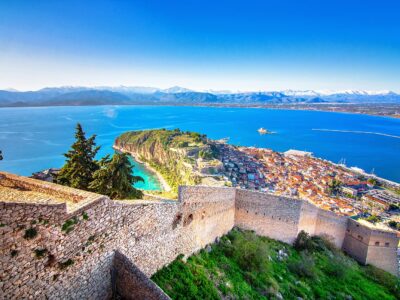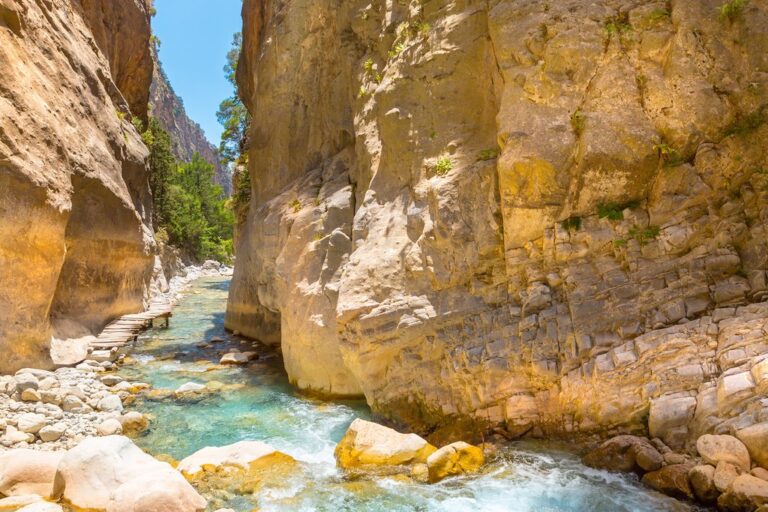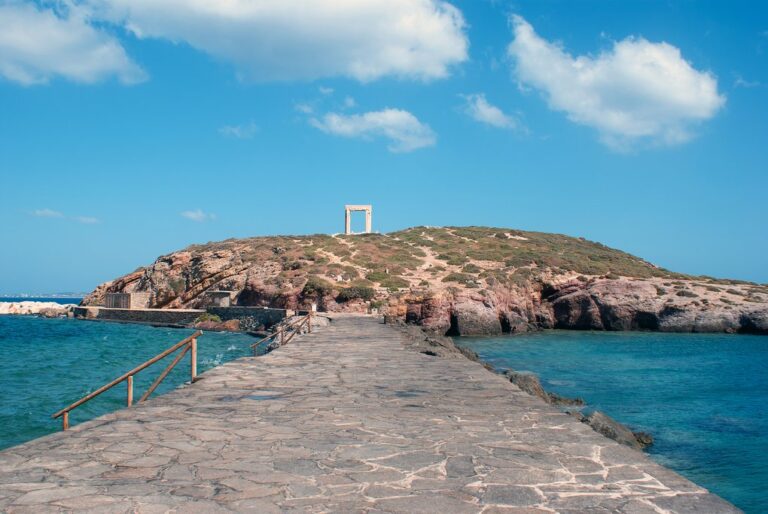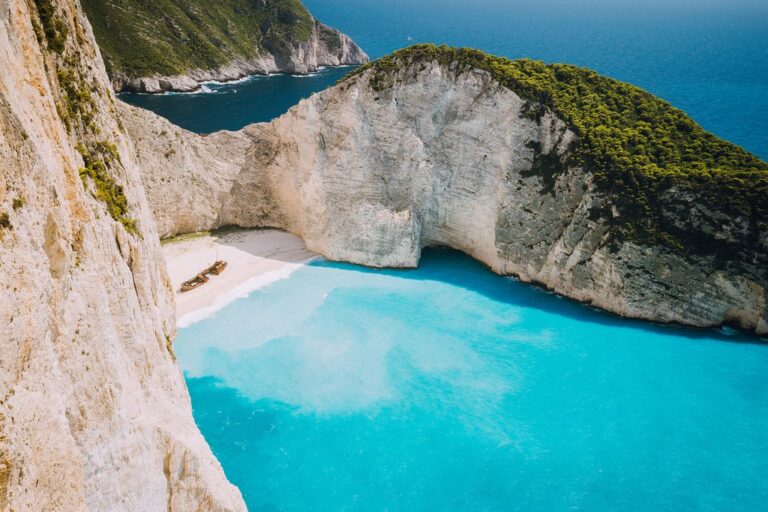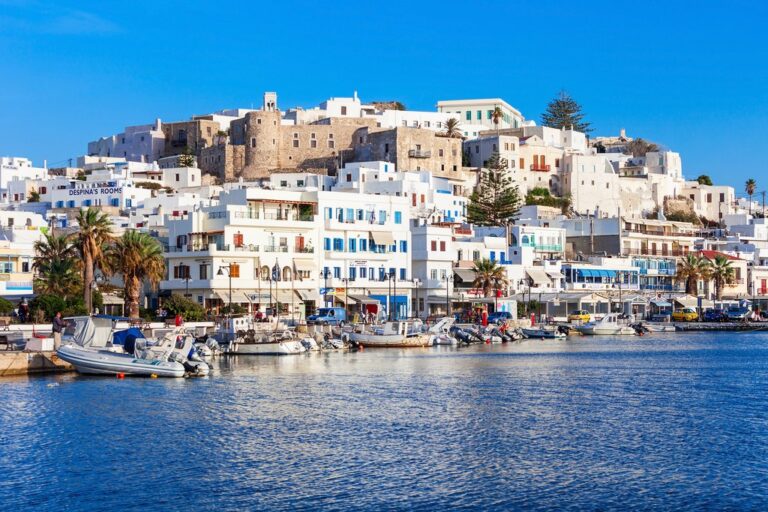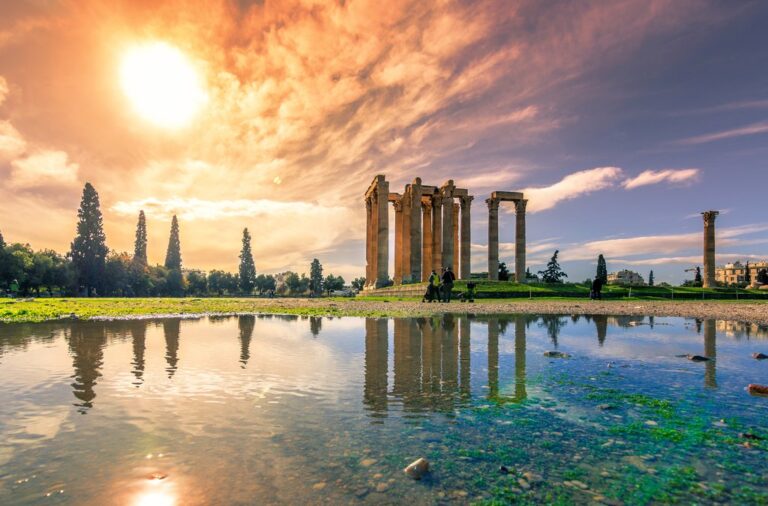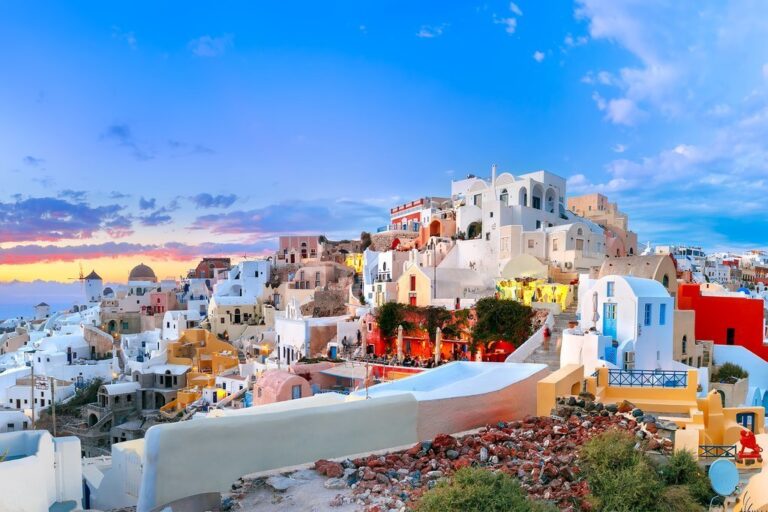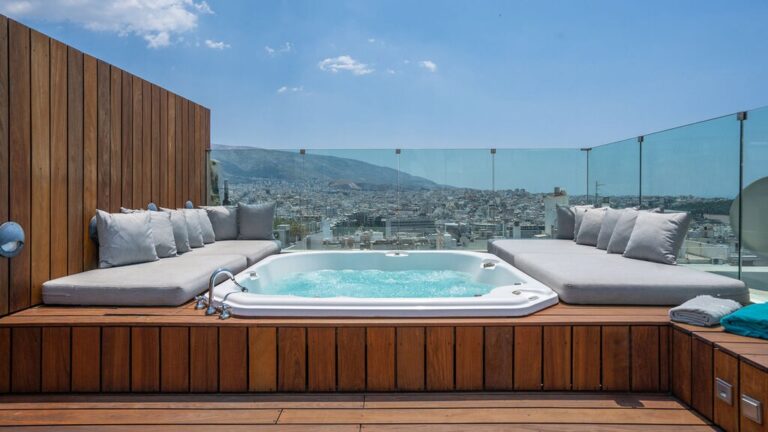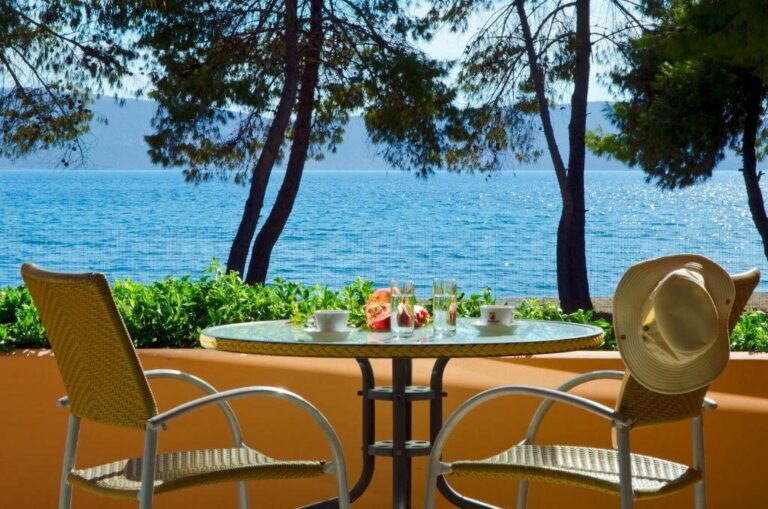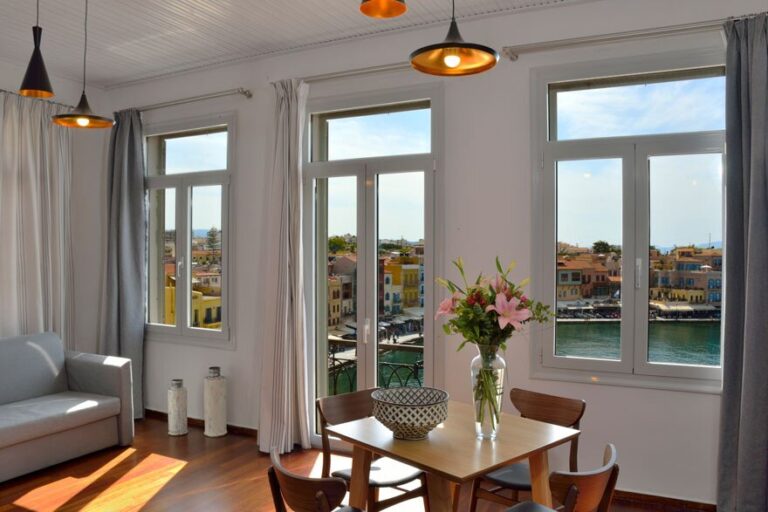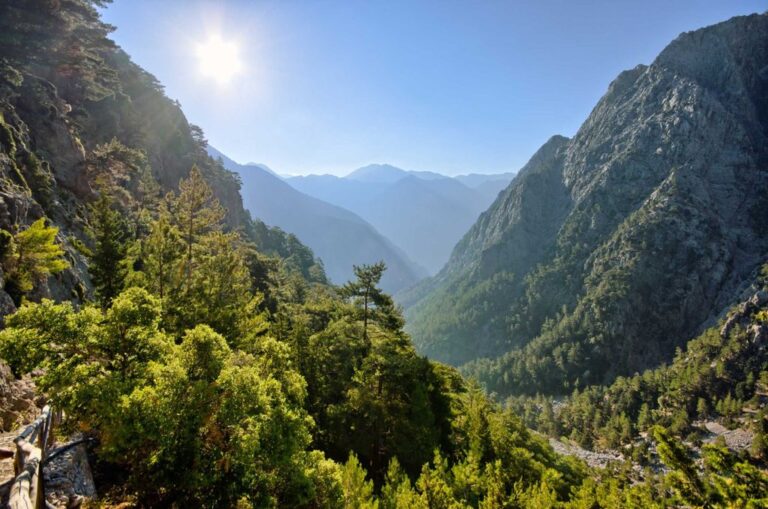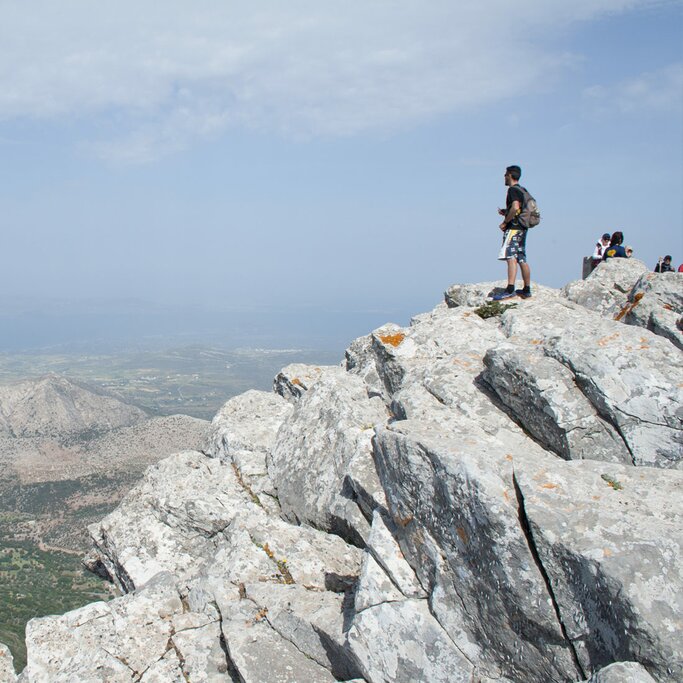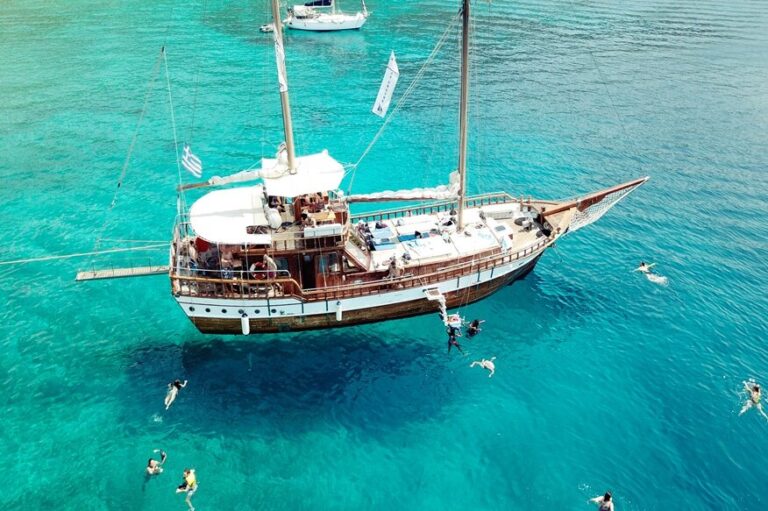Interactive Athens and Crete for Families – 14 Days
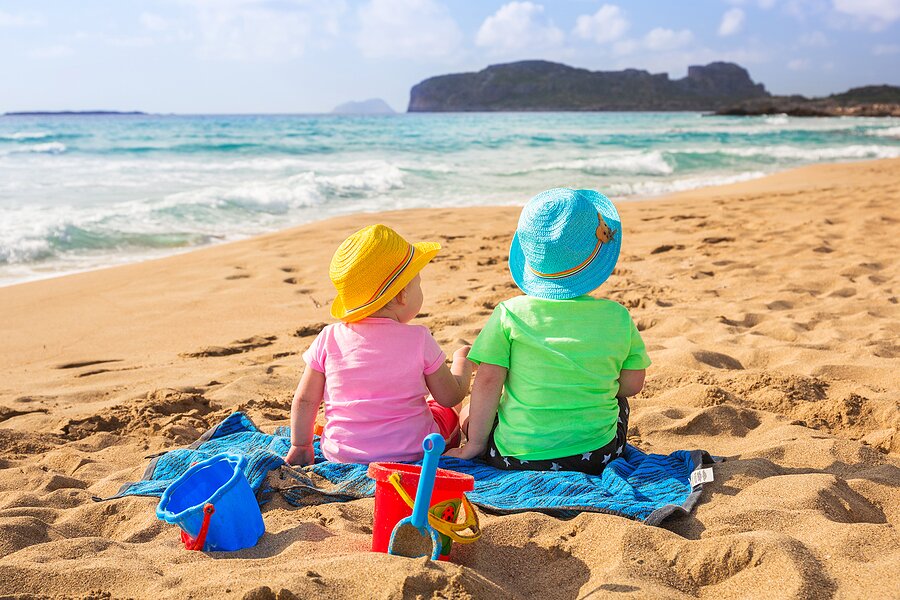
This two-week itinerary gives you and your school-aged children plenty of time to get their hands on Greek cultural activities in Athens and the major cities of Crete. Start in Athens, where you can paint the Parthenon and exercise like an Olympian at the Panathenaic Stadium. You’ll fly to Crete, where you’ll participate in mosaic-making workshops, archaeological adventures, and botanical treasure hunts, alongside plenty of time to wander at your own pace or relax on the beach.
Highlights
- Practice your athleticism like an Olympian in the Panathenaic Stadium
- Make your own mosaic after an imitation archaeological dig in Chania
- Relax on some of Greece’s most beautiful beaches at Balos and Gramvoussa
- Learn about myths and legends in their birthplace at the Palace of Knossos
Brief Itinerary
| Day | Highlights | Overnight |
|---|---|---|
| Day 1 | Arrive in Athens & Explore the Plaka Neighborhood | Athens |
| Day 2 | Painting the Parthenon & Family Mythology Tour | Athens |
| Day 3 | Olympic Games Workout & Athenian Riviera Tour for Families | Athens |
| Day 4 | Athens to Chania | Chania |
| Day 5 | Elafonissi Beach, Excavation Simulation & Mosaic Workshop | Chania |
| Day 6 | Treasure Hunt in the Botanical Garden | Chania |
| Day 7 | Balos & Gramvoussa Day Cruise | Chania |
| Day 8 | Chania to Rethymno & Cultural Tour of Rethymno Town | Rethymno |
| Day 9 | Rethymno Beach Day | Rethymno |
| Day 10 | Free Day in Rethymno | Rethymno |
| Day 11 | Rethymno to Heraklion with Soap-Making Workshop & Scavenger Hunt | Heraklion |
| Day 12 | Traditional Rusk & Bread-Making Workshop | Heraklion |
| Day 13 | Minoan Myths Around Knossos | Heraklion |
| Day 14 | Heraklion to Athens & Depart |
Detailed Itinerary
Day 1: Arrive in Athens & Explore the Plaka Neighborhood
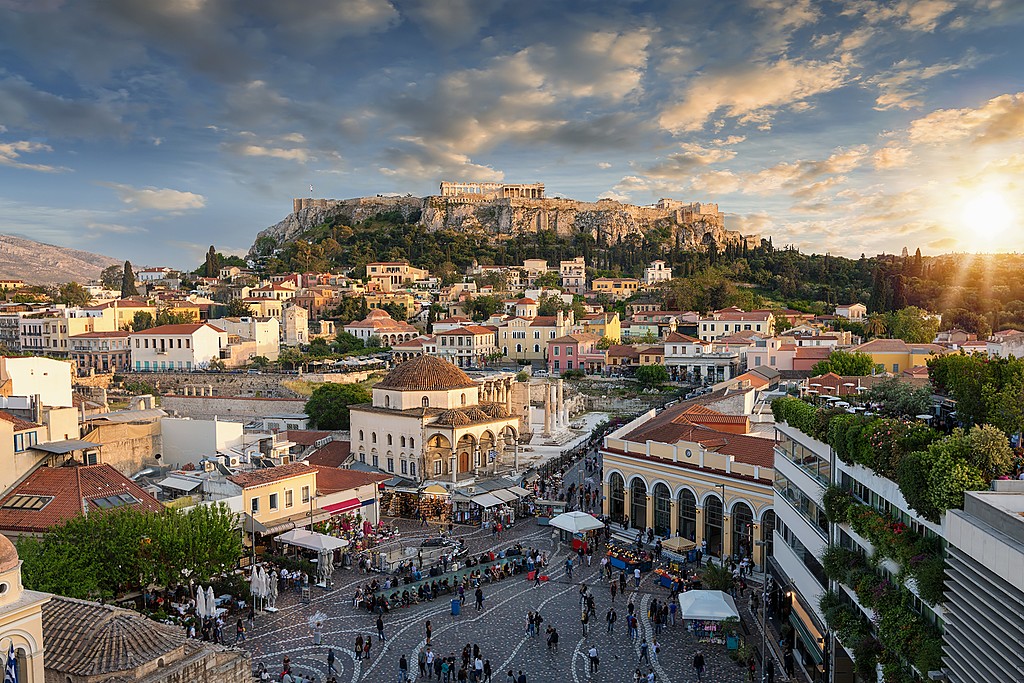
Walk in the pedestrian part of the city and try to trace the remnants of the city’s various stages at spots like the Roman Agora, the Old University, the Tower & the Bath House of the Winds, the Benizelos Mansion, the Monument of Lysicrates, and all the lovely Byzantine churches. If you have the time, stop in at one of the two children’s museums, the Museum of Greek Children’s Art and the School Life & Education Museum.
Day 2: Painting the Parthenon & Family Mythology Tour
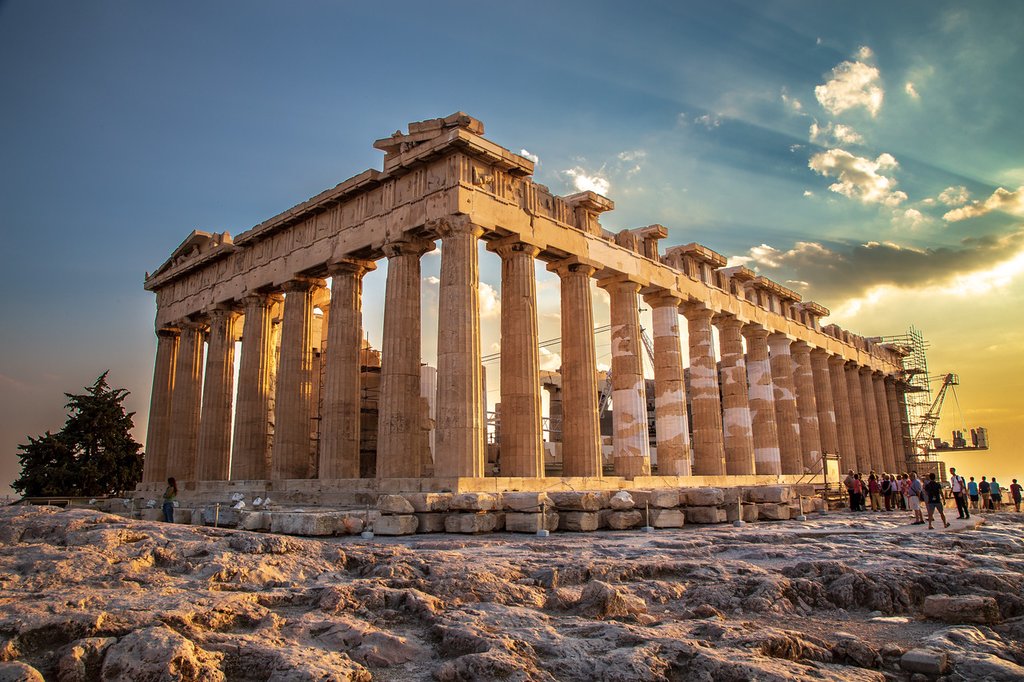
Before painting, you’ll learn about the site’s history. Ancient Greeks built the Parthenon between 447-432 BCE as a dedication to the goddess Athena, the protector of Athens. A feat of Greek architecture, the marble temple contains no straight lines or angles anywhere among its 46 outer and 19 inner tapered Doric columns.
To sharpen your skills, you’ll enjoy a short workshop on drawing and painting techniques. Learn about color combinations, perspective, and capturing the unique architectural components of the Parthenon.
Now that your creative juices are flowing, explore the Acropolis and Ancient Agora with your family, learning about Greek mythology and history while enjoying views of the city and kid-friendly activities.
After meeting your guide, you’ll start your walk up to Acropolis Hill, the “Sacred Rock” that defines Athens. You’ll visit all its popular monuments, including the Parthenon, Theater of Dionysus, Temple of Athena Nike, and Temple of Erechtheion. Listen to the legends of the Greek pantheon, such as the mighty Zeus, Athena (goddess of wisdom), Poseidon (god of the sea), Dionysus (god of wine and theater), and more. The stories will keep kids entertained and asking questions.
After enjoying Acropolis Hill and learning the city’s secrets, you’ll walk down to the ancient marketplace, the Agora. Socrates and Plato hosted many political and philosophical discussions on this plaza. At the end of the tour, enjoy a family activity inside the ancient Agora, using all your newfound knowledge about Greek gods, goddesses, and heroes.
Day 3: Olympic Games Workout & Athenian Riviera Tour for Families
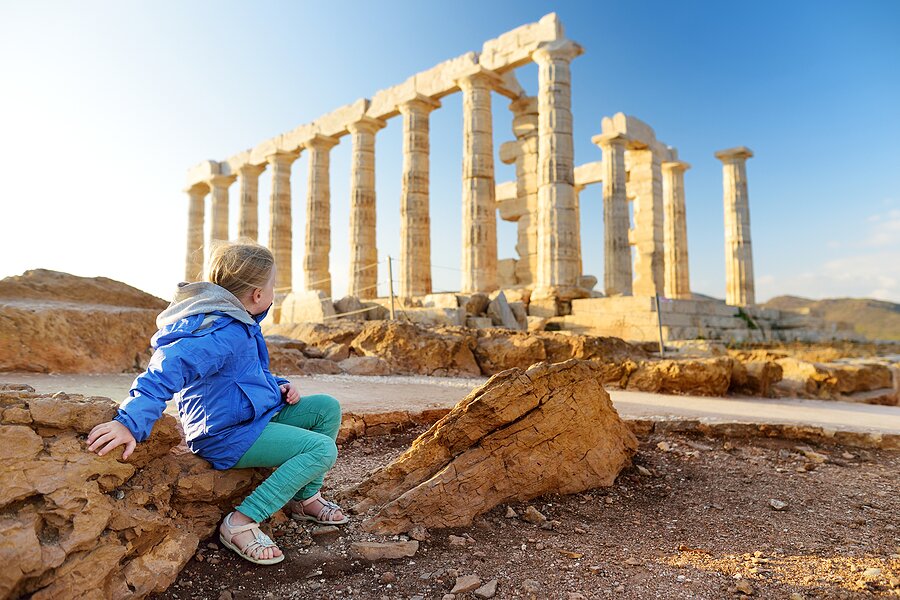
The year 1896 marked the revival of the ancient Olympic Games, which occurred every four years starting in 776 BCE. You’ll stand in the very spot where the athletes stood and learn how they trained, what the games entailed, and how the competition evolved.
All of your training will prepare you for your own competition—a race in the Panathenaic Stadium! This stadium is the only one in the world made entirely of marble. Following the hallowed track, you’ll race around the arena before receiving your official certificate of participation.
You can make an optional stop here to visit the Neraida Floating Museum, which narrates the business career of the ship’s owner, John Latsis, as well as the history of the ship from its construction in 1939 to the completion of its reconstruction in 2010. If you and your kids love ships and boats, and especially battleships, do not miss the opportunity to visit the Park of Naval Tradition inside the marina. Historic vessels are docked there, such as the destroyer “Velos” (now a museum of the struggle against the military dictatorship), the only copy of an ancient trireme named “Olympias” and the cable-laying ship “Thales of Miletus’ constructed in the U.S. in 1909.
Further south, another optional stop is at the rescue and rehabilitation center for sea turtles, run by the Sea Turtle Protection Society of Greece in Glyfada. Its purpose is to treat injured and sick sea turtles and eventually release them back into the sea, as well as to raise awareness regarding this rare species that reproduces in the endless sandy beaches of the Mediterranean Sea. Take part in the sea turtle rescue tours, adopt a sea turtle for 10 days, and enjoy a meal on the Glyfada beach.
The tour ends at the tip of Cape Sounion, home to the famous Temple of Poseidon that overlooks the Saronic Gulf and its islands. Before heading back to the city, you can opt for an early dinner at a traditional taverna right on the beach. Enjoy fresh seafood caught just a few feet from where you’re sitting, plus good company and the sound of the waves lapping the shore as you watch the sunset.
Day 4: Athens to Chania
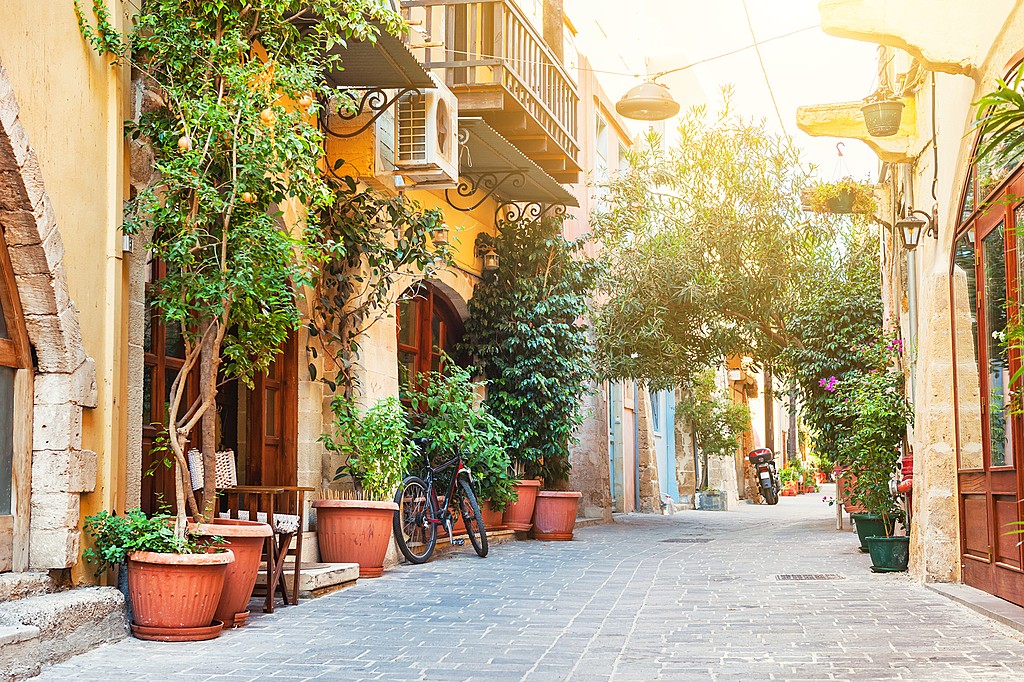
Start at the Municipal Market of Chania, where you can try some of the local products. Then stroll through the Municipal Gardens and make your way into the center of the old town. Here you’ll enjoy a first glimpse of the city’s preserved streets and characteristic buildings that make it so special.
Continue toward the old port and enjoy the breeze off the Aegean Sea. Chania’s famed Venetian harbor features impressive seafront residences and buildings (some working as boutique hotels), an old mosque, and a lighthouse. Find your favorite spot to take a break and relax with a refreshing drink before exploring Chania’s off-the-beaten-path neighborhoods.
The districts of Topanas, Splantzia, Kolombo, and Kasteli all offer panoramic views of the harbor, traditional Cretan taverns, and grand buildings. If you prefer to ditch any crowds, wander a bit further into the Halepa and Tabakaria neighborhoods. Here you’ll discover more authentic Cretan communities and seafront tavernas for dinner.
For incredible views away from the city, head to the Venizelos Tombs atop Prophet Ilias Hill. Here you’ll find the Venizelos family’s graves, including that of Eleftherios Venizelos, a respected politician and former Prime Minister of Greece. This historic spot sits above Chania, offering a peaceful setting and sprawling scenery out into the sea.
After enjoying a traditional dinner at one of the city’s many cafes, restaurants, and taverns, end your day with a sunset drink at one of the old port’s rooftop bars.
Day 5: Elafonissi Beach & Afternoon Workshop
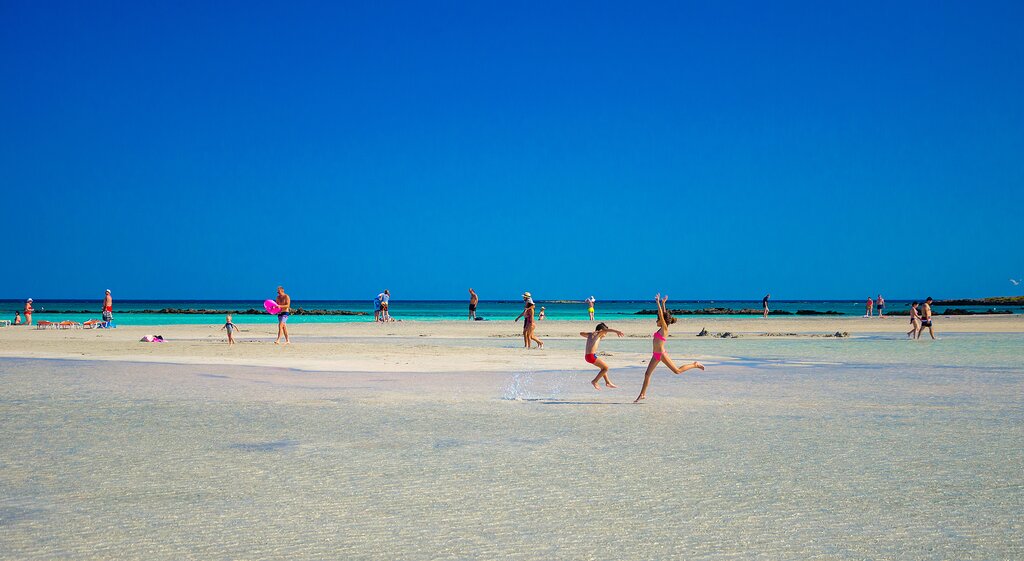
Chat with a local specialist who can help organize your trip.
Day 6: Treasure Hunt in the Botanical Garden
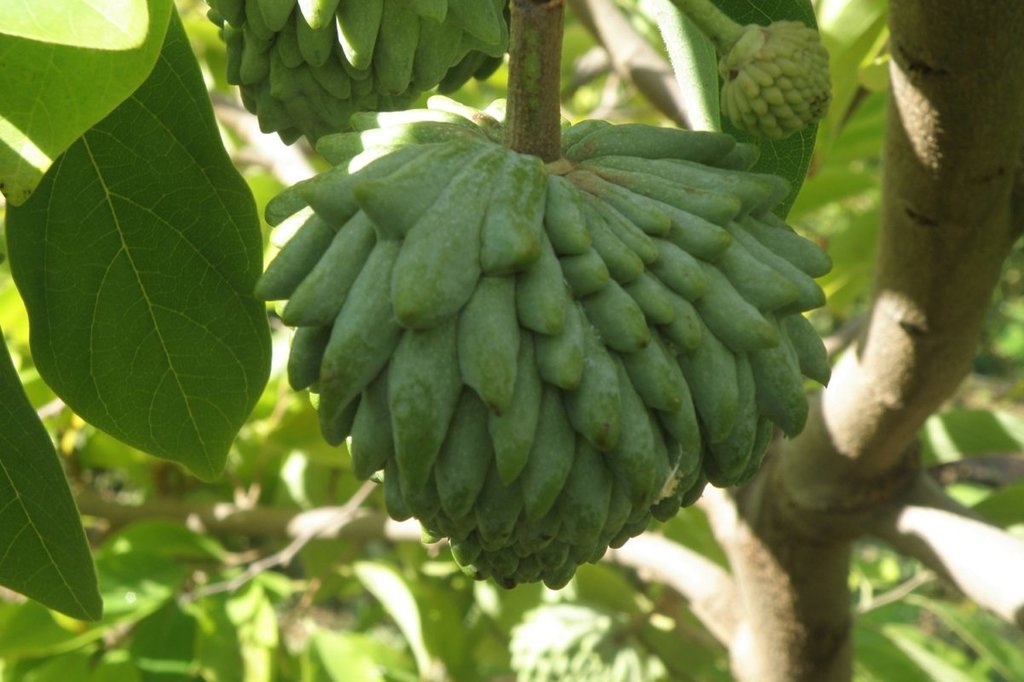
On this family treasure hunt, you’ll explore all three continents in this beautifully green setting set on the outskirts of the renowned Natural Park of Samaria. Encounter peacocks, hunt for banana trees, and try to spy the rarest flowers in the garden. After the tour and the game, you’ll enjoy traditional cuisine at the garden’s terrace overlooking the northern coast.
Day 7: Balos & Gramvoussa Day Cruise
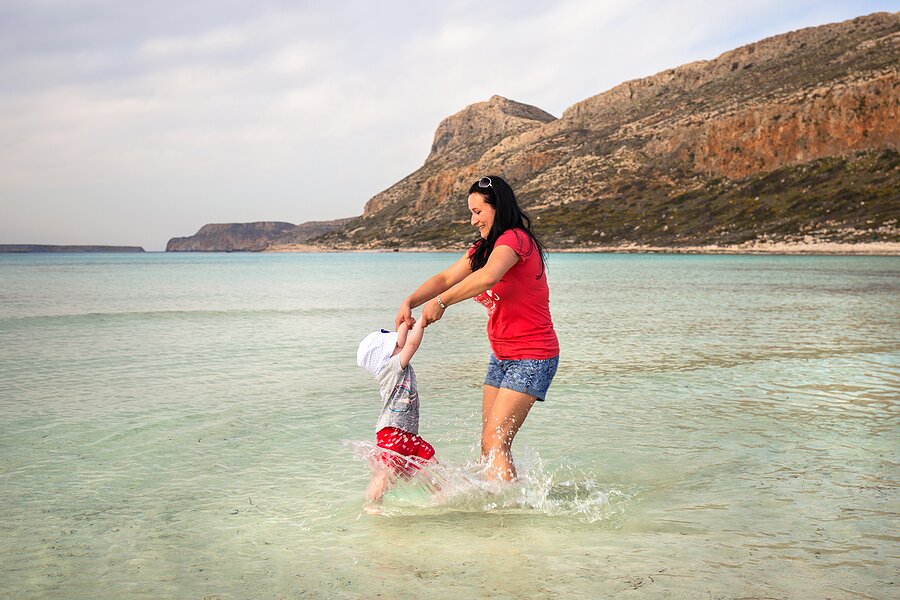
You’ll start your morning with a quick drive to the port of Kissamos, where you’ll board a cruise to the small island of Gramvoussa and enjoy some time to explore Gramvoussa on your own. Relax at the beach or hike the rocky red trail to the island’s castle. The Venetians built the Gramvoussa Fortress strategically on top of cliffs, giving modern visitors panoramic views of the Cretan Sea.
After your time on Gramvoussa, you’ll take a shorter cruise to the breathtaking lagoon of Balos. Enjoy swimming and soaking in the shallow turquoise waters with the signature white and pink sand below your feet. With tall rocks surrounding the lagoon, these natural elements come together to create a blissful landscape.
Day 8: Chania to Rethymno & Cultural Tour of Rethymno Town
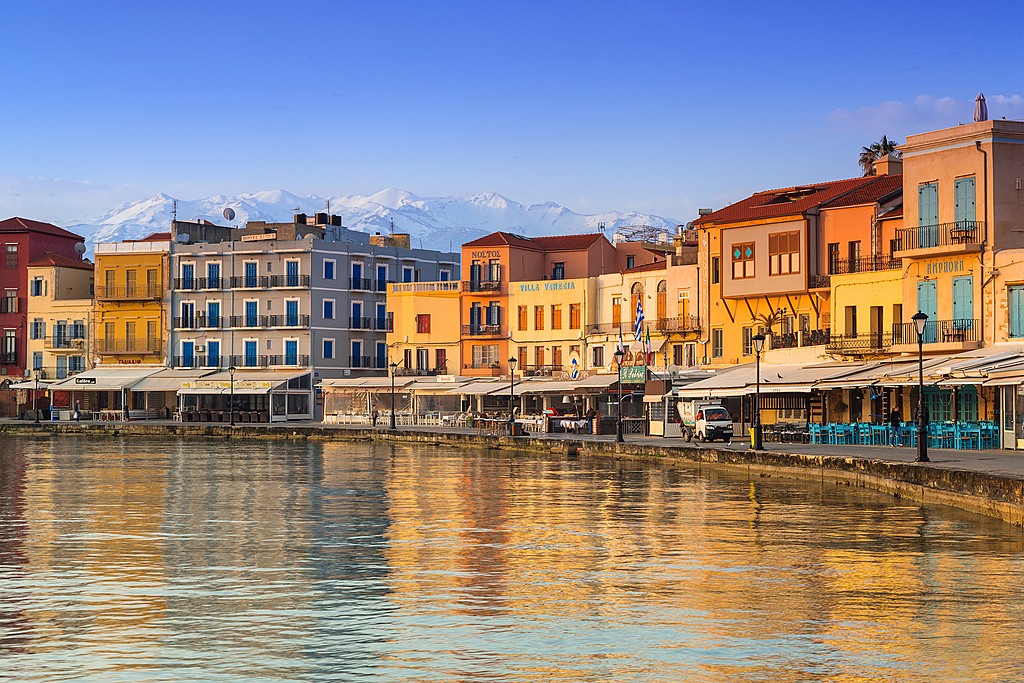
Just a couple of miles off the main road, you’ll find the scenic turquoise Lake Kournas. Stop here to stretch your legs and walk around the lake, or rent kayaks or paddleboats. If time allows, continue further south to the traditional village of Argyroupoli, where you can enjoy an authentic Greek meal next to the area’s waterfalls.
As you reach Rethymno, leave your car and wander the car-free streets of Old Town, one of the best-preserved medieval cities in Greece. Take some time to stroll around its narrow streets, colorfully decorated with flowers, and discover the unique culture of this charming city.
The first thing to notice is how the city’s Venetian fortifications mingle harmoniously with contrasting religious structures. You’ll find Orthodox and Catholic churches standing near mosques and mansions sporting Venetian architecture, all blending together. In the small Venetian harbor, admire the 13th-century Venetian mole that once protected the city from the wild Cretan Sea. At the end stands the imposing lighthouse, built by the Turks after the 17th century.
Next, walk up to the Venetian Fortezza, an impressive Venetian fortress built in 1573 CE to protect the city. Here you’ll find the remains of buildings and churches, plus incredible views of the city and the sea. Move on to the Archaeological Museum and enjoy exhibits from Neolithic to Roman times. You can also view Archaic and early Christian artifacts from Eleftherna or Minoan items from the Armeni and Monastiraki sites.
For something a bit lighter, pop into the Folklore and History Museum. Housed in a restored Venetian building with a beautiful courtyard, the gallery offers eight halls with over 5,000 items dating from the 17th to the 20th centuries. Peruse collections of textiles, woven baskets, embroidery, lace, historical costumes, ceramics, photographs, maps, weapons, coins, and more.
Stop to browse artisan shops or grab a snack at one of the seaside cafes as you embrace the city’s leisurely pace.
Day 9: Rethymno Beach Day
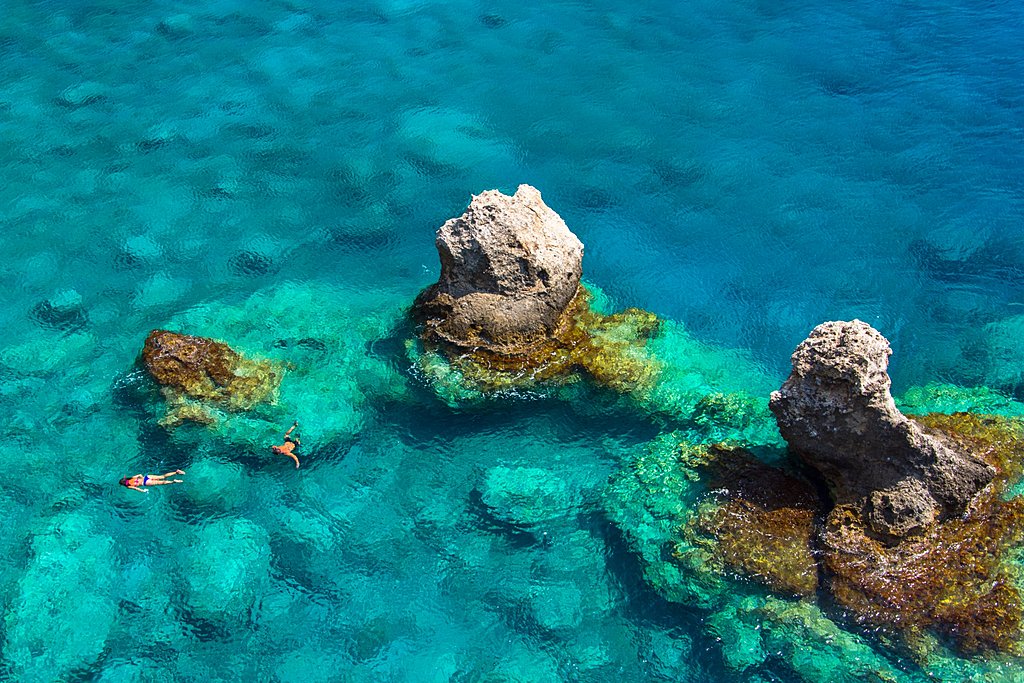
However, if you’re up for a drive, there are a few other great beach options near Rethymno.
- Preveli Beach. If you drive toward the southern coast in the Rethymno region, you can enjoy a day of swimming at the picturesque Preveli Beach. Enjoy its warm, clear waters and scenic palm forest. To get to the sand, you’ll need to complete a short hike, so make sure you pack water, snacks, and whatever else you may need. (If you prefer an easier route, you can drive to Plakias and take the small local boat to Preveli and back.)
- Agia Pelagia. You’ll find this beach on the northern coast on the way to Heraklion. It’s a long and narrow stretch of sand that curves around a cove and features that picture-perfect Cretan turquoise hue. It’s near a town, so you’ll find many options for amenities, watersports, and diving excursions.
- Matala. In Matala, there’s a beautiful beach that stretches almost 1,000 feet (300 m) long. The beach is sandy, but the water’s edge contains fine gravel, so the sea is deep and crystal-clear. The real highlight is the rock formations that bookend the beach, with a huge cave at the northern end. If you’re feeling brave, climb to the top and dive into the pools below, as some of the locals do.
Day 10: Free Day in Rethymno
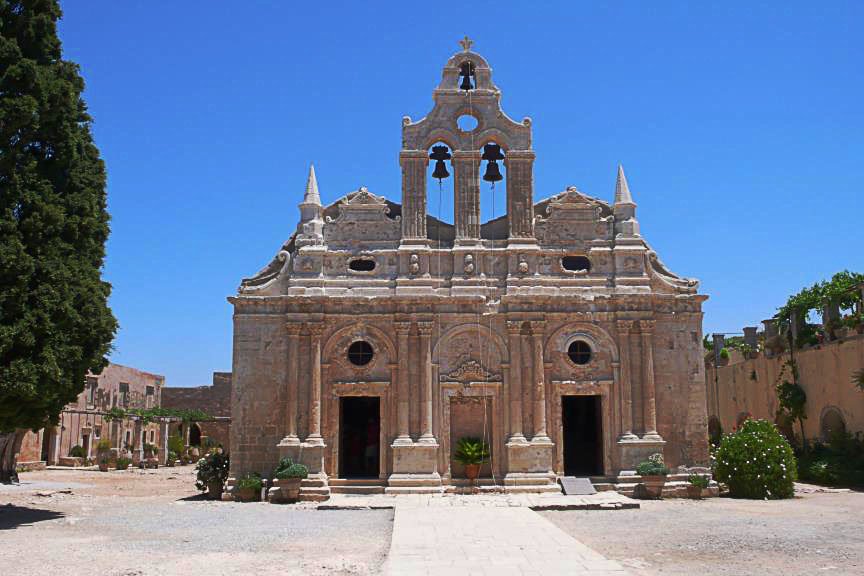
Make your first stop at Ancient Eleutherna. Located at the crossroads of Kydonia, Knossos, and Mount Ida, the ancient city was founded by the Dorians in the 9th century BCE. Sculpted tombs on the cliffs and carved sarcophaguses provide insight into the civilization of Ancient Eleutherna. The newly inaugurated interactive museum will lead you through the journey of life in the Mediterranean, revealing a lively trade several millennia ago between Egypt, Syria, Athens, Asia Minor, Cyprus, and North Africa.
After Eleftherna, you continue to the village of Margarites. The people are engaged mainly in livestock, agriculture, and pottery and visitors can buy different pieces of pottery and other items from traditional crafts in the village craft shops.
Continue to the Monastery of Arkadi, the most famous and historical monastery of Crete, in an idyllic location. Situated at an altitude of almost 1,640 feet (500 m) in the foothills of Psiloritis mountain, the beautiful monastery became famous when one of the major revolts in Cretan history against Ottoman rule broke in 1866. Once there, admire the incredible architecture of the main church and adjoining cells; don’t miss the valuable collection of ecclesiastical and historical items exhibited in the museum.
Day 11: Rethymno to Heraklion & Workshop or Scavenger Hunt
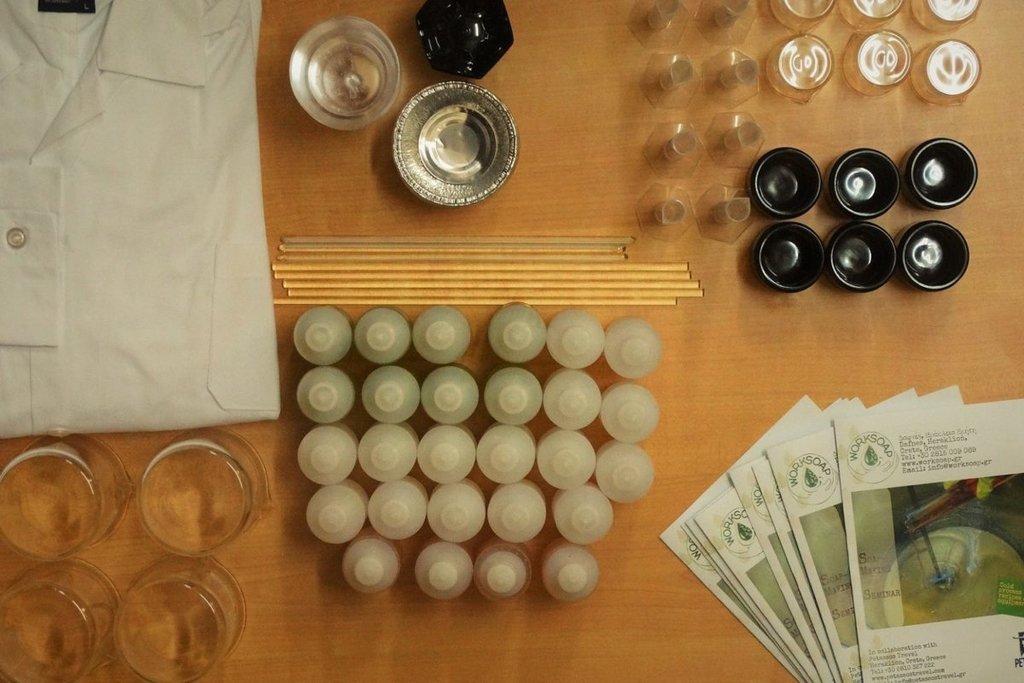
The tour focuses on Heraklion in the year 1669. During this time, the city experienced one of the longest sieges in world history. With the city in ruins and the fall of its crown imminent, you’ll answer questions like: How did people survive under these circumstances? What was the city administration doing to help? Did someone powerful betray Heraklion?
Your family will follow your guide through this historical labyrinth, walking up to the city’s walls, exploring major monuments, and meeting with locals. After the scavenger hunt, you’ll enjoy a food break with local pies.
Day 12: Traditional Rusk & Bread-Making Workshop
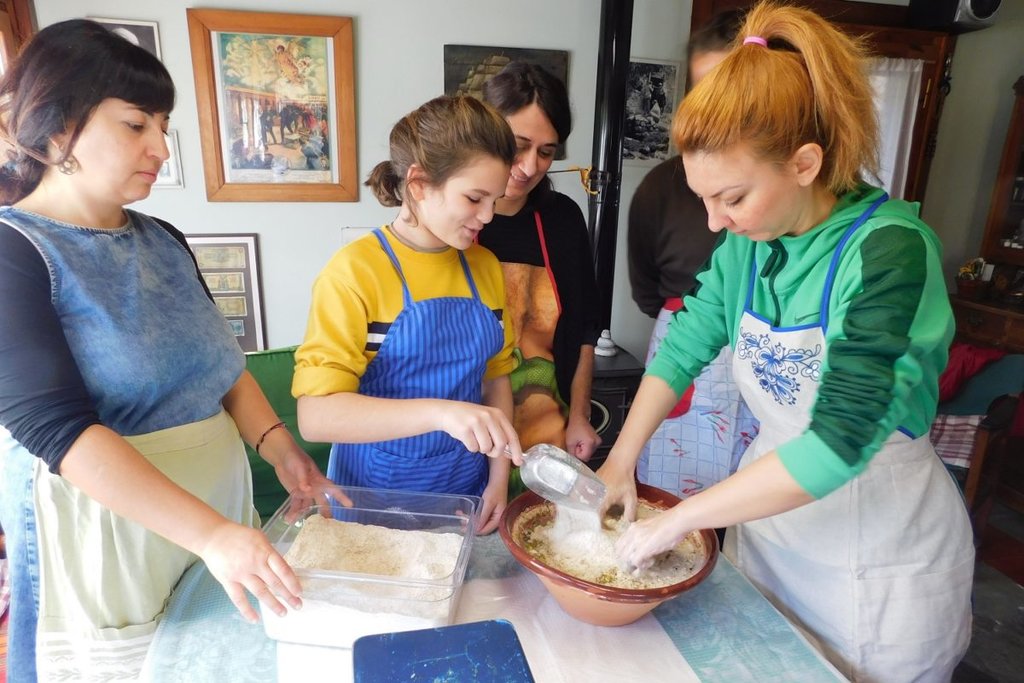
You’ll start by learning about different grains and cereals. Then, get acquainted with sourdough and practice kneading your own bread and rusk, a traditional Cretan biscuit. While your bread is rising and baking, you’ll taste some of the local Cretan cuisines. Discover the important flavors and ingredients that popularized this diet around the world. Your host will share the best of Crete’s favorite delicacies before you enjoy your warm bread fresh from the oven.
Day 13: Minoan Myths Around Knossos
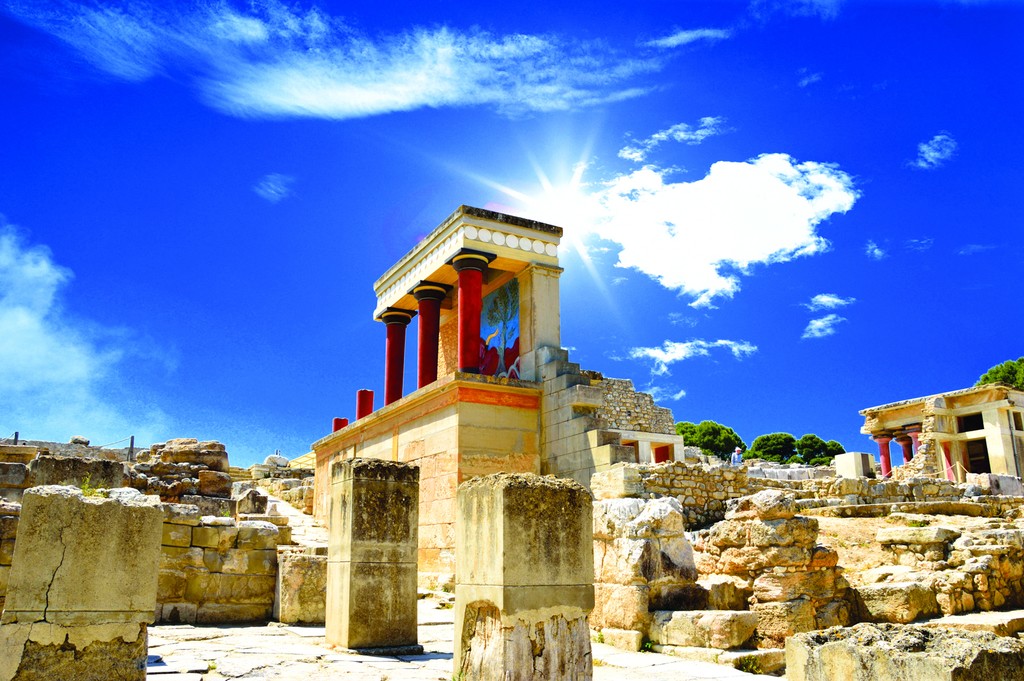
The day’s activities were inspired by the great writer and philosopher Nikos Kazantzakis. His book, “At the Palaces of Knossos,” dives into the ancient Minoan civilization. With the help of interactive games and activities designed by experienced educators, your family will travel back in time 4,000 years to one of the most interesting periods of time: Minoan Crete.
You’ll enjoy a picnic lunch similar to the traditional Minoan diet. If you so choose, you can also add on a visit to the Palace of Knossos archaeological site itself, where an experienced interpretive guide will help you explore the archeological site and put your new knowledge to the test.
Day 14: Heraklion to Athens & Depart
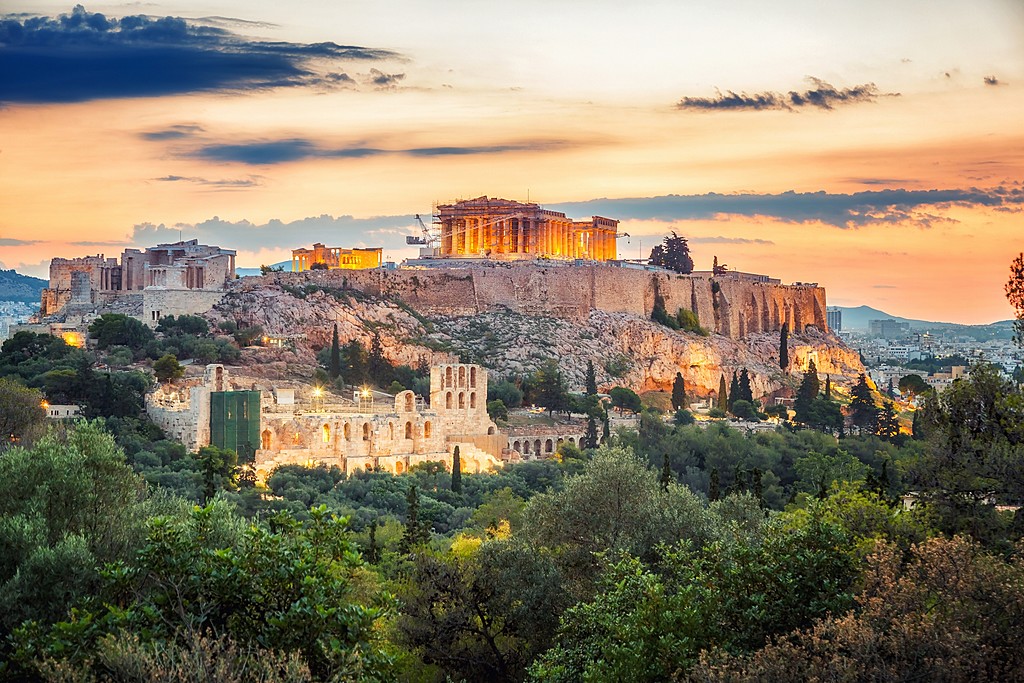
Map
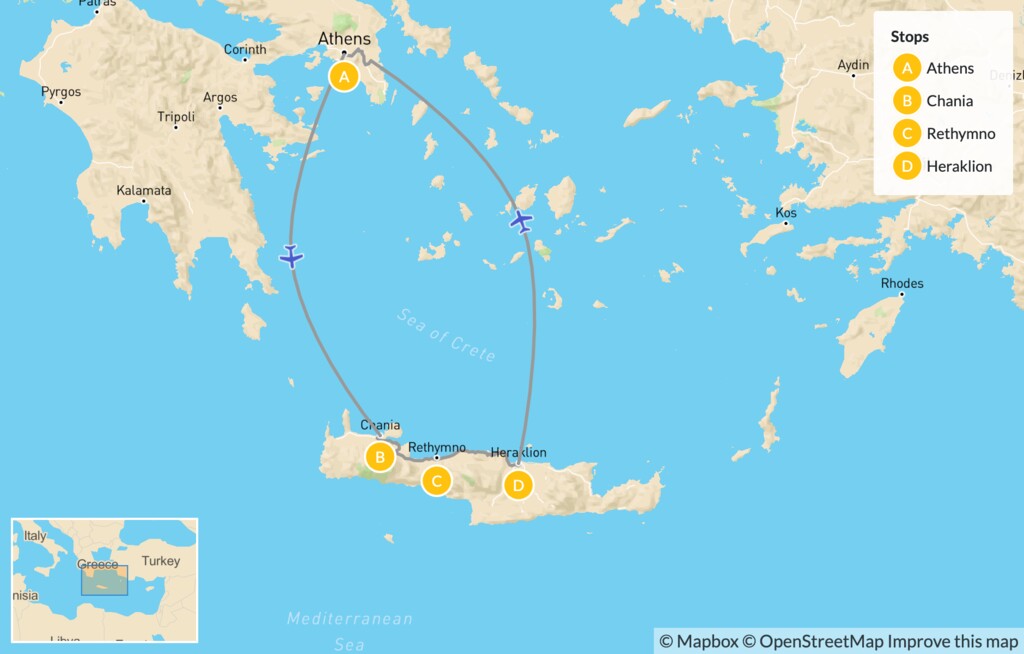
Map of Interactive Athens and Crete for Families – 14 Days
T3280

